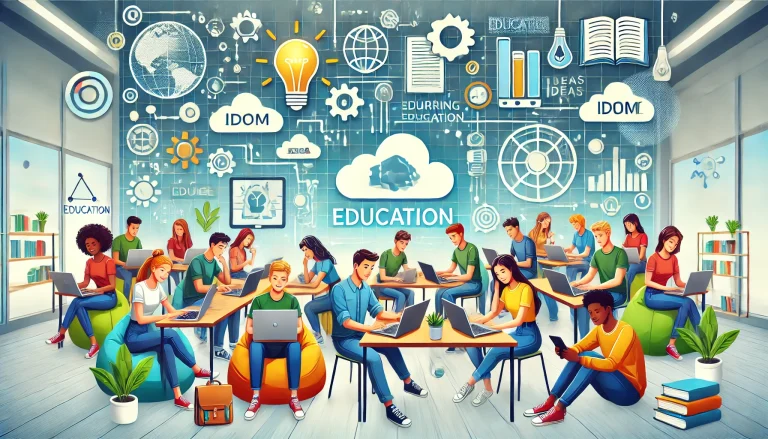What Are Education Systems in Different Countries? A Global Comparison

Introduction: Education is a fundamental pillar for societal growth and personal development. However, the approach to teaching, learning, and curriculum design varies significantly across the world. From rigorous academic systems to progressive models, each country has its unique way of shaping the future of its students. In this article, we’ll explore the education systems of different countries, comparing their key features, strengths, and weaknesses to provide a comprehensive view of global education. Whether you are a student, educator, or simply interested in global learning practices, this comparison will offer valuable insights.
Overview of Education Systems in Different Countries
Education is central to personal growth and the progress of society. The global education landscape is diverse, with each country adapting its educational policies and structures to meet specific needs and challenges. While many countries follow similar stages of schooling, the methodologies, grading systems, and even the priorities can differ greatly.
Here are the common stages of education around the world:
- Early Childhood Education (Preschool)
- Primary Education (Elementary School)
- Secondary Education (High School)
- Tertiary Education (University/College)
Key Features of Education Systems in Different Countries
1. United States
- Structure:
- Pre-K (Pre-School)
- Elementary School (Grades K-5)
- Middle School (Grades 6-8)
- High School (Grades 9-12)
- Higher Education (Universities, Community Colleges)
- Characteristics:
- Flexibility in subjects and electives
- Focus on extracurricular activities (sports, arts, clubs)
- Emphasis on standardized testing (SAT, ACT)
- Debt in higher education: Many students rely on loans
- Strengths: Diversity in learning styles, student-driven learning, high-quality tertiary education institutions.
- Challenges: Inequality in educational access, high cost of higher education.
2. United Kingdom
- Structure:
- Primary School (Ages 4–11)
- Secondary School (Ages 11–18)
- Higher Education (Universities)
- Characteristics:
- Focus on specialization from an early age (choosing subjects in high school)
- Use of GCSEs (General Certificate of Secondary Education) in secondary school, followed by A-levels
- University degree system (3-year bachelor’s programs)
- Strengths: Strong academic focus, renowned universities (e.g., Oxford, Cambridge), shorter university degree courses.
- Challenges: Pressure on students to choose career paths early, costs of university education, elitism in top-tier universities.
3. Finland
- Structure:
- Early Childhood Education (1–6 years old)
- Primary and Secondary Education (Ages 7–18)
- Higher Education (Universities, Polytechnics)
- Characteristics:
- No standardized tests until the end of secondary school
- Teachers are highly qualified and have master’s degrees
- Focus on equity, ensuring all students have equal access to high-quality education
- Liberal education system with a strong emphasis on critical thinking and creativity
- Strengths: High-quality education, minimal academic pressure, equality in education.
- Challenges: Cold climate, smaller class sizes may limit opportunities for social interaction.
4. Japan
- Structure:
- Kindergarten (Ages 3–6)
- Primary School (Grades 1–6)
- Junior High School (Grades 7–9)
- High School (Grades 10–12)
- Higher Education (Universities, Technical Colleges)
- Characteristics:
- Strong emphasis on discipline, respect, and group learning
- High parental involvement in school activities
- Extensive after-school programs for further development
- Strengths: High academic performance, respect for teachers, efficient schooling system.
- Challenges: Intense pressure on students, long school days, a lack of focus on individuality.
5. Germany
- Structure:
- Kindergarten (Ages 3–6)
- Primary School (Grades 1–4)
- Secondary Education (Diverse pathways: Gymnasium, Realschule, Hauptschule)
- Higher Education (Universities, Vocational Schools)
- Characteristics:
- Dual education system: A blend of vocational training and academic education (e.g., apprenticeships)
- Early specialization: Students must choose between vocational tracks or academic tracks after primary school
- Free higher education system in public universities
- Strengths: Strong vocational training system, strong focus on practical skills, free education.
- Challenges: Early specialization may limit flexibility for students, rigorous academic pressure.
6. China
- Structure:
- Preschool (Ages 3–6)
- Primary School (Grades 1–6)
- Secondary School (Grades 7–12)
- Higher Education (Universities, Colleges)
- Characteristics:
- Highly competitive exams (such as the Gaokao) that determine university admission
- Focus on mathematics and science
- Long school hours and intense study culture
- Strengths: High academic standards, emphasis on hard work, significant global investment in higher education.
- Challenges: Intense competition, mental health issues due to academic pressure, lack of creative freedom.
Comparison Table: Education Systems in Different Countries
| Country | Structure | Focus Areas | Key Strengths | Key Challenges |
|---|---|---|---|---|
| United States | Pre-K to University | Diversity, Electives, Standardized Testing | Flexibility, Extracurricular Opportunities | High Cost of Higher Education |
| United Kingdom | Primary to University | Specialization, A-Levels | Strong Universities, Academic Focus | Pressure to Choose Career Early |
| Finland | Early Education to University | Equity, Critical Thinking | High-quality education, Low Academic Pressure | Smaller Social Interaction |
| Japan | Kindergarten to University | Discipline, Group Learning | High Academic Performance | Intense Academic Pressure |
| Germany | Kindergarten to University | Vocational Education, Academic Rigor | Dual Education System, Free Public University | Early Specialization |
| China | Preschool to University | Mathematics, Science, Gaokao | High Academic Standards, Global Investment | Intense Competition |
The Role of Technology in Education Systems Worldwide
Education systems around the world are increasingly incorporating technology to enhance learning experiences, streamline administrative tasks, and provide global access to education. Whether it’s online learning platforms, digital classrooms, or interactive learning apps, technology plays a crucial role in shaping the future of education.
Some global education tech trends:
- Blended learning: Combining traditional face-to-face learning with online tools
- Edutainment apps: Apps that make learning fun, such as Duolingo and Khan Academy
- AI-powered learning: Adaptive learning systems that respond to students’ needs
- Global collaboration: Tools like Google Classroom and Zoom that enable global classroom collaboration
Best Educational Apps from Different Countries
1. Khan Academy (USA)
- Best For: K–12, general knowledge
- Why It’s Great: Offers a wide range of subjects with video lessons and exercises.
- Platform: Android, iOS, Web
2. Duolingo (USA)
- Best For: Language learning
- Why It’s Great: A fun and interactive way to learn over 30 languages.
- Platform: Android, iOS, Web
3. BYJU’S (India)
- Best For: K–12, exam preparation (especially for Indian students)
- Why It’s Great: Highly visual and engaging content for various subjects.
- Platform: Android, iOS
4. Unacademy (India)
- Best For: Competitive exams (NEET, JEE, UPSC)
- Why It’s Great: Live lessons and test series for in-depth preparation.
- Platform: Android, iOS
5. Edmodo (USA)
- Best For: Classroom collaboration
- Why It’s Great: Teacher-student communication and assignment tracking.
- Platform: Android, iOS, Web
Conclusion: Education Around the World – A Diverse Landscape
Understanding the education system in different countries allows us to appreciate the diverse approaches to teaching and learning. While many countries share similarities in their structure, there is no one-size-fits-all model. Each education system is shaped by culture, history, and socioeconomic factors, which influence how students learn and develop.
As we move forward, the inclusion of technology in the classroom, along with a growing focus on individualized learning, will continue to transform education across borders. Whether you’re a student considering study abroad opportunities, a teacher seeking international collaboration, or an educational researcher, understanding these different systems can open doors to more opportunities for learning and growth.






